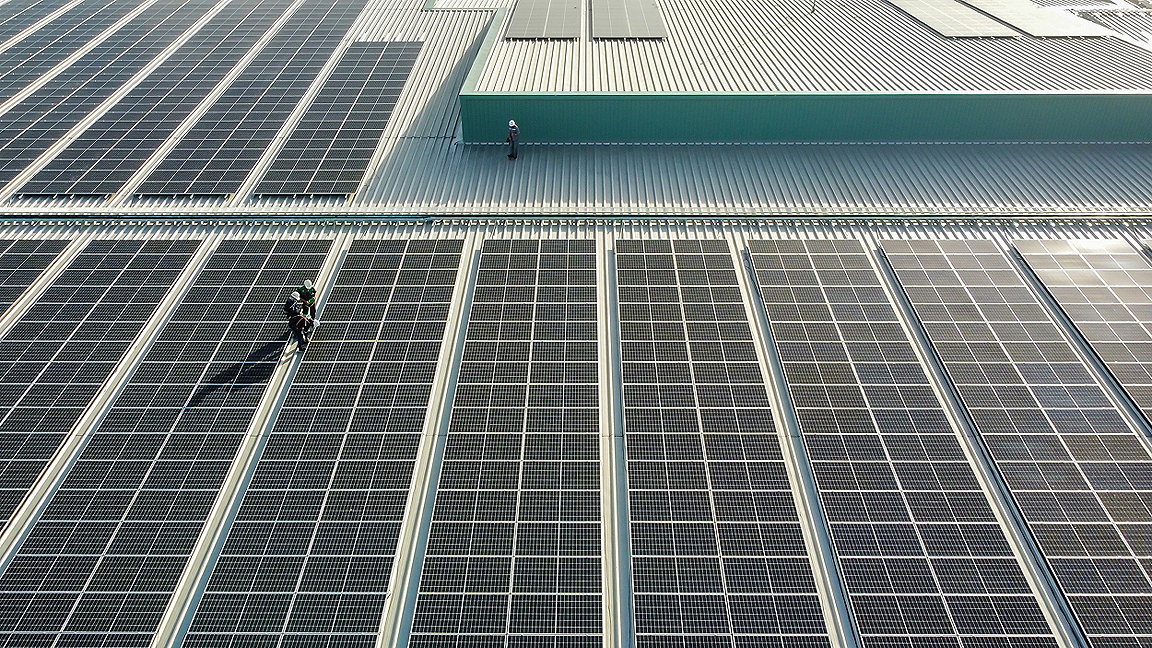
In January, the Law Society published its first bespoke guidance note on green leases, reflecting the fact that these are now front of mind across every sector of non-domestic real estate. RICS, along with a number of other industry representatives, contributed to the formulation of the guidance.
Much of the recent focus on green leases has been prompted, inevitably, by Minimum Energy Efficiency Standards (MEES) legislation, and in particular the 1 April deadline after which it is no longer lawful to continue to let commercial property that has an energy performance certificate (EPC) rating of only F or G.
Most commercial leases will now include drafting that seeks – at minimum – to protect existing EPC ratings. However, green leases are about much more than MEES; indeed, the first green leases precede the legislation by several years.
Green leases emerge over past decade
The conversation began when the Better Buildings Partnership launched its Green Lease Toolkit in 2009. This was swiftly followed by the introduction of the carbon reduction commitment (CRC) regime in 2010.
A now defunct – and little-mourned – piece of legislation, the latter at least marked the point at which some landlords began to focus on putting clauses into leases that dealt not only with the regime but also with environmental issues more widely.
Such landlords were at that stage a little ahead of the market. Drafting tended to be aspirational, expressed in a way that was either not legally binding or contained in separate memoranda of understanding. As a general rule, it was far from ambitious.
The following decade saw a gradual evolution in green lease drafting, which then accelerated with the introduction of the MEES legislation. Different categories began to emerge, with the more onerous obligations often described as 'dark green', and it certainly wasn't uncommon for institutional leases to include at least 'light' or 'mid' green drafting.
Clauses focused primarily on, on the one hand, restricting tenant alterations that might adversely impact energy efficiency and, on the other, widening the scope of service charge regimes in order to allow landlords to recover the cost of energy efficiency improvements.
But what stopped landlords from going further? First, tenants tended not to be keen on the additional obligations, and landlords ultimately prioritised getting their deals finalised rather than wrangling over these clauses.
Second, while many landlords had recognised the need to impose obligations on their tenants, most were not yet ready to make their own commitments – for example, to fund improvements beyond what would be recoverable through service charge. And third, landlords were wary of including covenants which might be regarded as sufficiently onerous as to have an adverse impact at rent review.
Rising ESG interest prompts change of tack
The environmental, social, and governance (ESG) revolution, combined with the UK government's commitment to net-zero carbon by 2050, has brought sustainability to the top of the agenda.
In government, this manifests itself as increasingly rigorous disclosure and reporting requirements, while in business it has been driven by combinations of shareholder, investor, employee and customer demands.
The result is that, while tenants still regard MEES as a problem for landlords, there are now clear indications that both parties see value in buildings that are highly efficient in themselves, and also managed and occupied in a highly efficient way.
There is, furthermore, a recognition that green leases are part of the way to achieve such efficiency, as well as allowing landlords and tenants alike to signpost their ESG credentials.
Drafting takes active, ambitious approach
With landlord and tenant motivations increasingly aligned, there is greater scope – and need – for more rigorous green lease drafting. We are now seeing drafting that:
- requires tenants to meet or retain specified standards by reference to ratings produced under the likes of the Building Research Establishment Environmental Assessment Method (BREEAM), the Leadership in Energy and Environmental Design (LEED) and the WELL Building Standard, rather than simply preserving the existing EPC rating
- obliges tenants to adopt positive sustainable behaviours such as the mandatory use of recycling schemes, targets for diverting waste from landfill, purchasing clean or renewable energy and reducing vehicle deliveries, among others
- demands significantly more technical detail from tenants on the energy efficiency impact of fit-out proposals
- widens the scope of data-sharing clauses, giving landlords the ability to use data to increase efficiencies and seek accreditations such as the Global Real Estate Sustainability Benchmark (GRESB) and BREEAM In-Use.
Indeed, data sharing is increasingly a primary concern. With the Financial Conduct Authority having recently completed its consultation on its proposed Sustainability Disclosure Requirements, for many landlords the ability to measure, collect, benchmark and report data that relates to all aspects of a building's construction, fit-out and use will now be even more of a priority.
Renewal and enforcement still pose problems
Questions of course remain. Renewals seem likely to continue to be challenging, with the courts so far taking a cautious stance when faced with landlords seeking to include green clauses in such leases.
In the case of Clipper Logistics plc v Scottish Equitable plc, the court applied the prevailing principle established in O'May v City of London Real Property Co Ltd [1983] 2 AC 726, that renewal leases should include new obligations beyond those included in the previous lease only where it is fair and reasonable for both parties, as significantly curtailing the landlord's attempt to introduce new green clauses into the renewal lease.
Increased attention is also being paid to the question of enforceability. Even where green leases now contain clear and binding obligations rather than the less concrete ones seen previously, in some cases it may be difficult to quantify a landlord's loss resulting from a breach.
Courts do have the power to order 'specific performance' compelling a tenant to actually comply with its obligations but may refrain from doing so where monitoring a tenant's ongoing compliance would require too much of the court's oversight.
These difficulties notwithstanding, the trajectory seems clear, and we can be confident that the green lease revolution has only just begun.
Related competencies include: Legal/regulatory compliance, Sustainability

